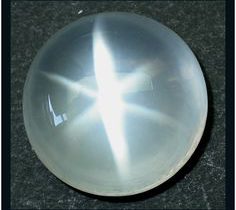Metamorphosis Quartz by Bob Jackson
Metamorphosis Quartz by Bob Jackson This clear to opaque milky quartz has been available for several years. In review, it is the precursor for “Oro Verde” (after irradiation with 0.3 MEV gamma) utilized for spheres due to opalescence somewhat like the Girasol opal from Madagascar and more recently, shaped into cabochons to achieve possible asterism/cateye effects (about 5% of the mine runs material). The designation “Meta quartz” was originally coined because of the change due to irradiation. Subsequently, it was observed that the rough material would slowly change to smoky or rose quartz over a period of 306 months upon exposure to sunlight or incandescent light. I continue to work with the material and am continually discovering unique optical effects. The quart has a needle type inclusion. The needles appear to be randomly distributed on the macro level in the massive material. On the micro level; the needles seem to group in seams, which vary in extent and in orientation. This seam arrangement permits shaping cabochons with asterism....
Read More


